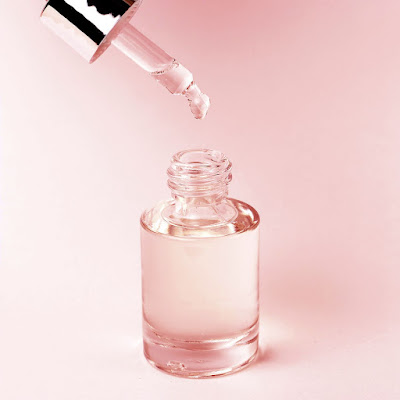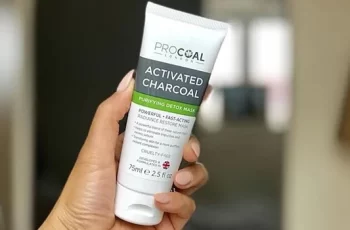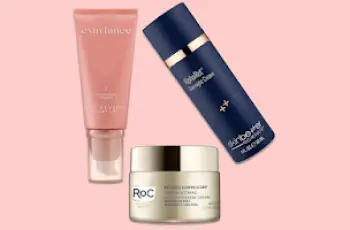
Can Hyaluronic Acid and Glycolic Acid be used together?
Yes, both are called acids, but they have different benefits and, more importantly, they work perfectly together. The question is, how exactly do hyaluronic acid and glycolic acid work together? What are the specific benefits you can expect from using both products in your skincare routine? Stay tuned as we explore together how you can benefit from the combination of these two powerful ingredients.
Which came first, glycolic acid or hyaluronic acid?
While both are called acids, hyaluronic acid and glycolic acid are actually quite different when it comes to what they do. Glycolic acid is part of the alpha hydroxy acid (AHA) family and works by exfoliating the top layer of skin by removing dead skin cells and debris while clearing excess sebum, dirt, and bacteria from pores. Without them, pores can become clogged, leading to blackheads, blemishes, and spots. Due to the exfoliating properties of glycolic acid, I recommend using it first as you’ll find that the hyaluronic acid-rich products you use afterwards will absorb into the skin quickly and effectively.
However, if you find that your skin tends to feel tight and sensitive, try applying hyaluronic acid first and then glycolic acid. By doing this, you ensure that your skin barrier is fully hydrated and able to absorb every gram of water or other formulas around your skin, allowing your complexion to thrive with constant hydration.
What Not to Mix with Glycolic Acid?
Since glycolic acid is a chemical exfoliant, it is best not to mix it with other exfoliants, such as members of the alpha hydroxy acid (AHA) group like lactic acid and members of the beta hydroxy acid (BHA) group like salicylic acid. By avoiding using these ingredients together, you will not overload your skin and deprive it of the important water and oils it needs to stay healthy. You may find that using these acids together can cause your skin to become tight, uncomfortable, and dry because sebum (the natural oil in your skin) is overproduced, making your face greasier. This can lead to the development of acne, blackheads, and other impurities.
You will also find that it is best to avoid using niacinamide and glycolic acid together, as they have similar pH levels, which can cause imbalances in your skin, often leading to allergic reactions.
If you want to learn more about what not to mix with glycolic acid, you can read the related blog post.
Can I use glycolic acid, hyaluronic acid, and niacinamide together?
The short answer is: yes, you can. The longer one is: if you use all three ingredients in the right order, you can use them together. What I mean by that is, you need to know what time of day is best to use which ingredient for the best results. For example, after cleansing, you can use an exfoliating toner with glycolic acid to remove any residue and layers of dead skin cells that remain on the surface of the skin. Then, you can apply a serum with hyaluronic acid, which will help lock in moisture to the skin and keep it hydrated all day long. You may even find that some products have both ingredients in their formulas, which are more effective than when used alone, but again, this is a matter of personal preference. As for using niacinamide in your daily skincare routine, I recommend using it at night, as this powerful antioxidant and hydrating properties will reverse any skin damage done throughout the day and give you a plump, hydrated complexion in the morning.
What should I put on my face after glycolic acid?
After using glycolic acid, it is best to use a hydrating serum or moisturizer that is rich in hydrating ingredients like hyaluronic acid. This way, you can ensure that fresh and newly emerged skin cells benefit from continued hydration throughout the day. You will also notice that the skin’s protective barrier is strengthened and can function properly. This means that the skin is protected and resistant to damage caused by free radicals such as UV radiation, pollution, and other environmental influences.
Another important product to apply to the skin after using glycolic acid is an SPF of 30 or higher to ensure that the skin is protected and resistant to skin-damaging UVA and UVB rays.
Is glycolic acid or hyaluronic acid better for wrinkle removal?
The beauty of glycolic acid and hyaluronic acid is that you can use them together! When dead skin cells build up, the complexion often appears dull, dry, and lackluster, and fine lines and wrinkles appear more severe than they really are. By utilizing the chemical peel benefits of glycolic acid, you can remove this layer of stratum corneum to reveal new, vibrant, and youthful skin, minimizing the appearance of signs of aging.
When it comes to using hyaluronic acid, many people often confuse dehydrated lines on the skin with signs of premature aging. In this case, the highly beneficial hydrating properties of hyaluronic acid can keep the complexion plump, moisturized, and free of fine lines. As I mentioned earlier, you can use these two powerful ingredients separately or use a powerful formula that includes both ingredients.
Can glycolic acid be used daily?
Yes or no, that largely depends on your skin type, as those with dry, sensitive skin should use glycolic acid every other day to avoid dry skin. Of course, don’t forget that it’s always best to consult a doctor or dermatologist to make sure any new product is safe to use. Another point to note is that the concentration of glycolic acid can affect how often you can use it. If this is your first time using glycolic acid, many experts recommend slowly introducing it into your routine to avoid unnecessary irritation or allergic reactions.
Here’s more information on using hyaluronic acid and glycolic acid together. And of course, if you have any questions, remember to follow us on Instagram.


